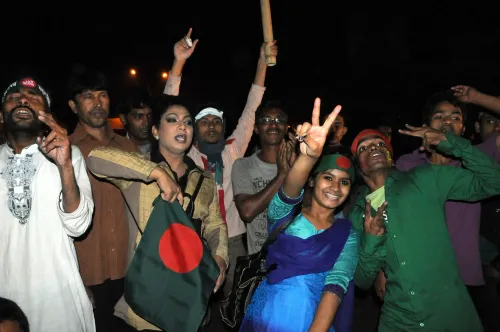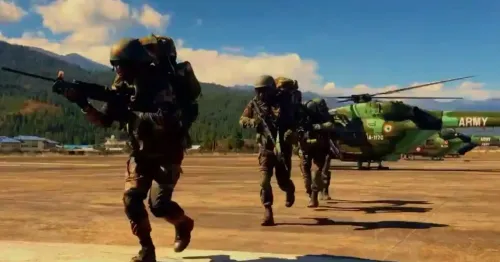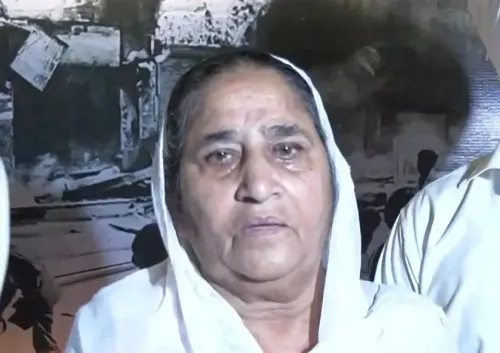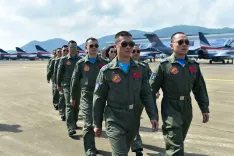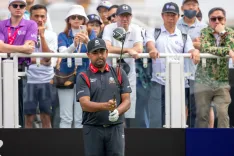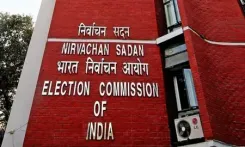How does the Indian Army honor the 26th Kargil Vijay Diwas?
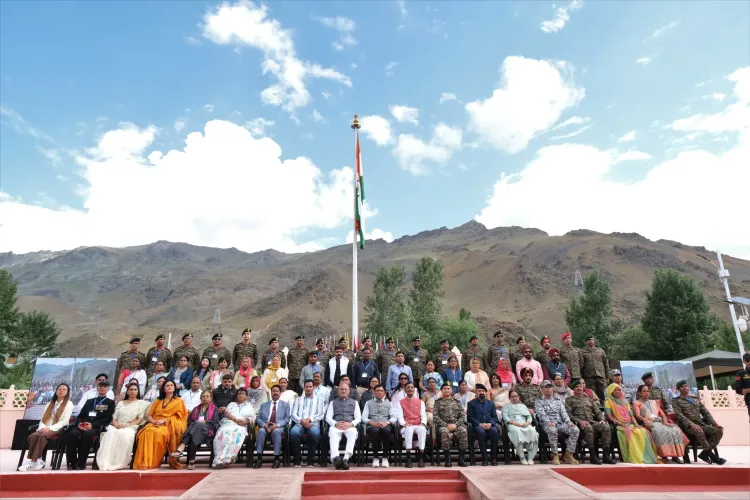
Synopsis
Key Takeaways
- 26th Kargil Vijay Diwas is observed on July 26 every year.
- Honors the 545 soldiers who sacrificed their lives in the 1999 Kargil War.
- Key ceremonies are held at the Kargil War Memorial in Dras.
- Highlights the Indian Army's commitment to peace and security.
- Includes outreach initiatives to families of martyrs across India and Nepal.
New Delhi, July 26 (NationPress) The Indian Army commemorated the 26th anniversary of Kargil Vijay Diwas with dedicated ceremonies and nationwide tributes honoring the bravery of soldiers who made the ultimate sacrifice during the 1999 Kargil War.
The main event took place at the Kargil War Memorial in Dras, attended by key figures including Union Ministers Mansukh Mandaviya and Sanjay Seth, Lieutenant Governor of Ladakh Kavinder Gupta, and Chief of the Army Staff General Upendra Dwivedi.
Families of martyrs, gallantry awardees, and senior military officials gathered to pay respect to the 545 brave souls who fell in the line of duty. The observance commenced on July 25 with a Battle Remembrance ceremony at Lamochen Viewpoint, where veterans and active personnel shared personal stories from the conflict.
The 'Shaurya Sandhya' program featured the lighting of 545 lamps, a poignant musical tribute performed by the Army band, and multi-faith prayers, symbolizing unity in remembrance.
On July 26, a solemn Wreath Laying Ceremony was conducted at the War Memorial. In his keynote speech, General Dwivedi praised the soldiers’ bravery and reaffirmed the Army’s dedication to peace and national security.
He emphasized recent precision operations under Operation Sindoor and discussed the Army’s evolution, introducing formations like ‘Rudra’ all-arms brigades, ‘Bhairav’ light commando battalions, ‘Shaktibaan’ artillery regiments, ‘Divyastra’ batteries, drone-equipped infantry units, and indigenous air defense systems.
The Army also launched several legacy projects, including the Indus Viewpoint in the Batalik sector, the e-Shradhanjali portal, and a QR-based Audio Gateway.
A Capability Display showcased advanced indigenous technologies in surveillance, firepower, and drone warfare.
An outreach initiative saw Army teams visiting the families of all 545 martyrs across India and Nepal. Cultural programs, youth engagement, and digital campaigns revived the Kargil battles to foster patriotic pride.
As the sun dipped behind the rugged peaks of Dras, the Kargil War Memorial illuminated in the colors of the Tricolour, standing tall as a beacon of national pride and sacrifice.

